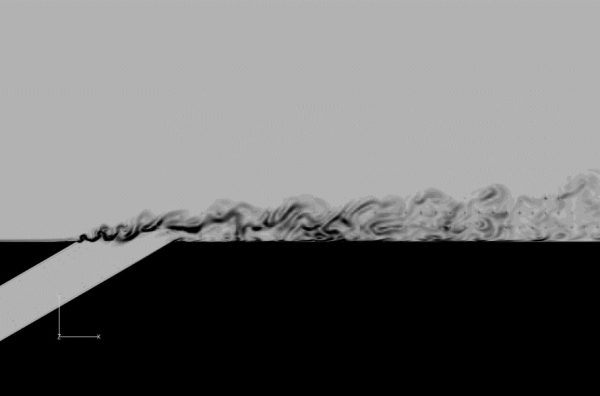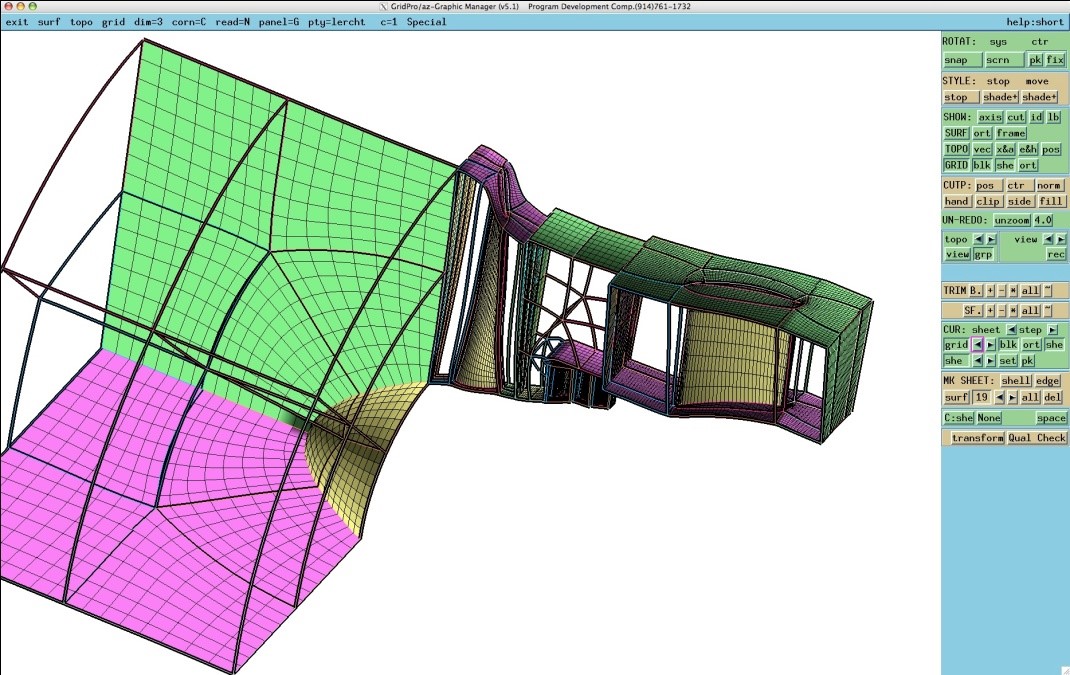Glenn-HT Code
Overview
The Glenn-HT code is a general purpose multi-block 3D Navier-Stokes solver that has been used extensively in detailed studies of heat transfer in turbomachinery. The code comes equipped with multiple turbulence models from two-equation RANS models to LES and Time-Filtered Navier-Stokes. It can be used for both steady-state and time-accurate simulations, including multi-blade row simulations.
The multi-block capability in Glenn-HT is completely general in that there are no limitations on the connectivity between blocks (completely unstructured at the block level), which allows extremely complex geometries to be studied with computationally efficient structured grids. In addition, non-matching grids are allowed at block boundaries, further facilitating simulations of flows in complex geometries.
Language
The Glenn-HT code is written in Fortran 90/95, taking full advantage of Modules in modern Fortran to enable the use of object-oriented concepts such as data abstraction and encapsulation, resulting in a highly maintainable and extendible code. The code is equipped with MPI for parallel computations and has been used on over 1000 cores. The Glenn-HT code is an exceptionally valuable tool for detailed flow simulations in complex geometries where computational efficiency of multi-block grids can make otherwise intractable flow and heat transfer simulations amenable to numerical study. Some of the earliest detailed simulations of tip clearance flows and multi-hole film cooling flows were done using the Glenn-HT. Currently, researchers using Glenn-HT are breaking new ground in detailed Time-Filtered Navier-Stokes simulations involving heat transfer and multi-blade row simulations of compressor-inlet flows.
General Features
- General 3D Navier-Stokes solver
- Main Use to Date: Highly accurate heat transfer predictions
- Graphical User Interface (GUI) available for generating input files and grids as necessary
- Time accurate capability (time averaging on the fly, runtime probes and rakes for processing such as FFT)
- Multiple turbulence models
- LES and Time-Filtered Navier-Stokes (TFNS) capability
- Very general structured multi-block grids
- Modular Fortran code design allows for easy modifications and improvements
- Extensive use of data types insulates the developer from many mundane tasks
- Parallel implementation using MPI
- Very good parallel efficiency. Have run cases with more than 1000 CPUs.
- Ability to run on many processors even if initial grid has very few blocks
- Used and developed over many years. Large number of technical articles written using results from Glenn-HT
- Historically used for turbines and compressors, but does not contain any hard-coded limitations with respect to those simulations.

- Multi-Blade Row capability
- Mixing plane
- Rotating-Sliding Interface (time accurate unsteady)
- Phase lag approximation (under development)
- Periodic boundaries need not be node matching
- Conjugate Heat Transfer Capability
- Solid and fluid regions solved using separate efficient solvers
- Solid-fluid interface need not be node matching
- Thermal Barrier Coating (TBC) can be treated either by a simplified model, or by gridding base solid and TBC with each having different properties
- Multi-Zone capability
- Fluid zones can have different properties and use different turbulence models, if they do not mix
- Each solid zone can have different properties
- Multi-Grid Capability to enhance convergence
- Grid coarsening Capability
- Can generate solutions on grids coarsened by as many factors of 2 as are common to all blocks
- Coarsened solutions can be used to continue on next finer grid (can greatly reduce CPU time)
- Compressible and incompressible (preconditioned) solver
Future Enhancements
Future enhancements to Glenn-HT could include incorporation of solution Adaptive Mesh Refinement, and higher-order accurate discretization schemes, both of which can be incorporated with relatively minor investment of time, given the flexible structure of the code. Both these enhancements would make Glenn-HT uniquely capable of simulating details of unsteady flows in turbomachinery.

